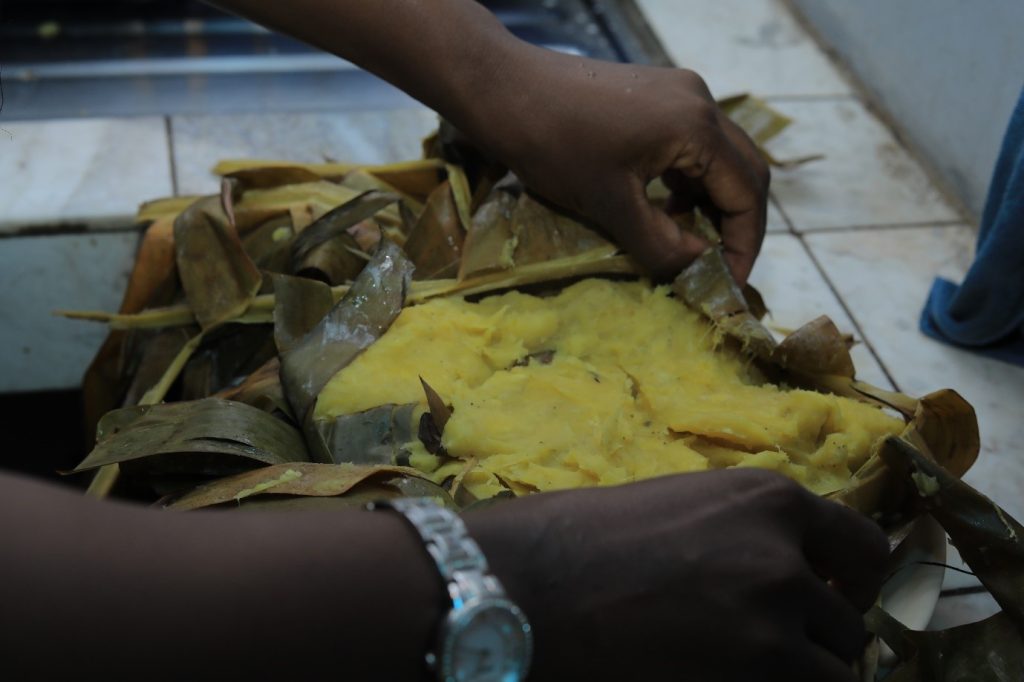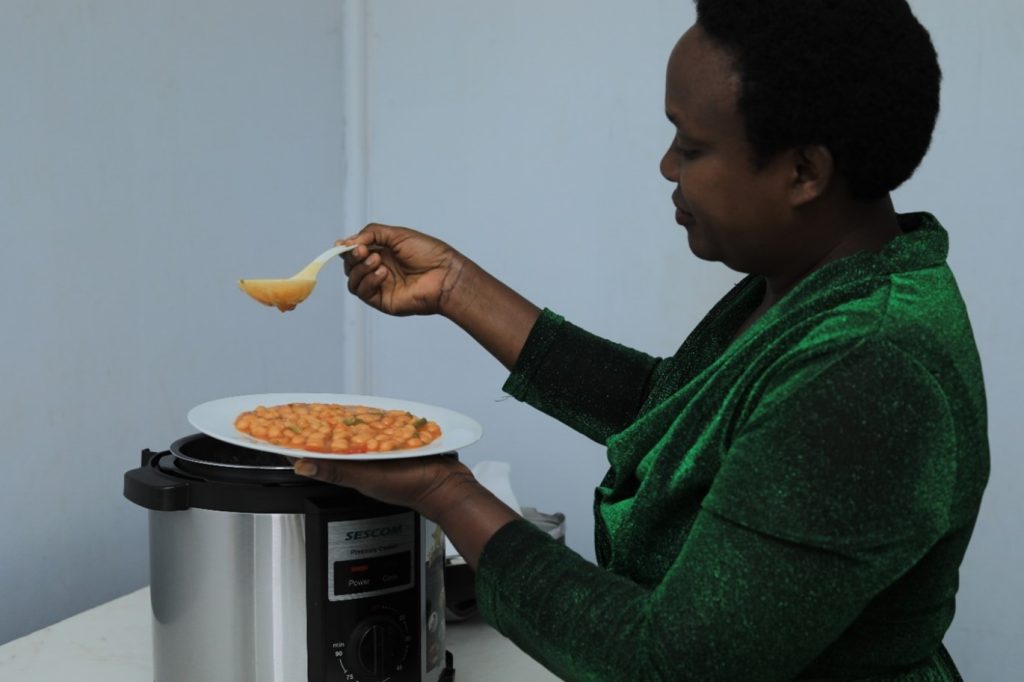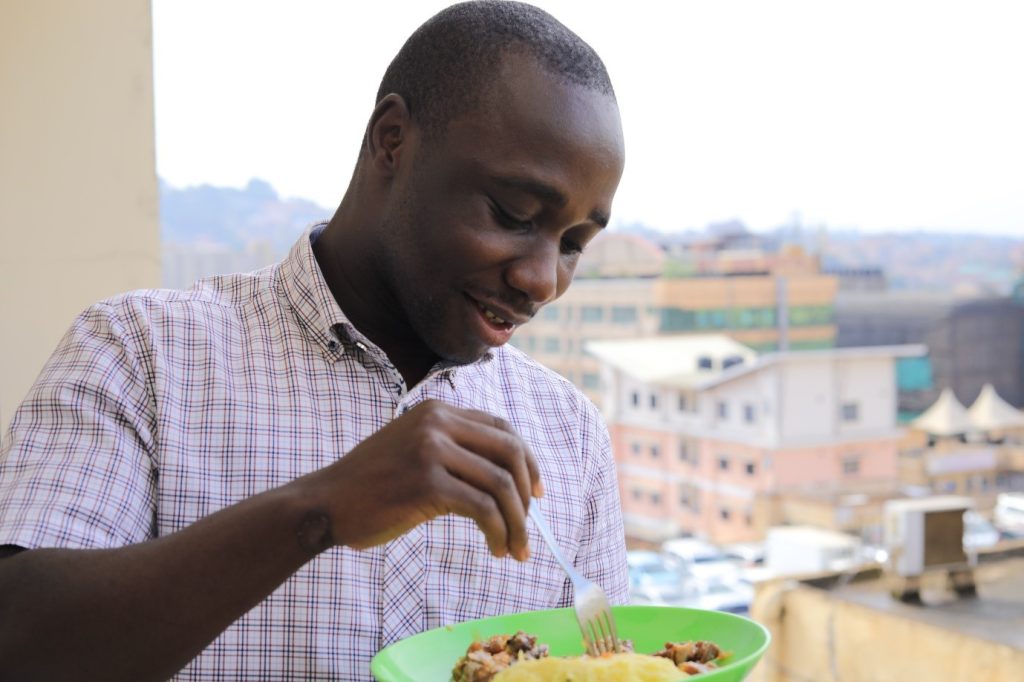
- Date
- 8th April 2022
- Categories
By Agnes Naluwagga (Centre for Research in Energy and Energy Conservation (CREEC)), Jimmy Agaba (CREEC), Claire Turyahebwa (CREEC), and Vimbai Chapungu (Gamos Ltd.).
Growing up as a child in Uganda back in the 90’s, going without electricity for more than half the week coupled with frequent power blackouts even in the city centres was the norm of the day. Cooking with electricity (eCooking) was uncommon because there was insufficient electricity generated in the country and besides it was super expensive to do so. Fast forward to 2022, the country has more than doubled its generation capacity with more power stations set to come onto the grid in the near future. Currently, the Electricity Regulatory Authority (ERA) and Uganda’s main power distributor, UMEME, are seeking ways to increase power consumption as there is surplus electricity. The general perception many of us have grown up with is that it is expensive to cook with electricity and this is evidenced in the national statistics as just about 1% of a population of over 41 million people uses electricity to cook. Well, the cost of electricity per unit has been on the rise since the government removed subsidies on electricity in 2012 and we do not anticipate a significant reduction soon; though some incentives such as the cooking tariff have now been put in place.
So why the interest in Cooking with Electricity now?
CREEC and MECS set out assess the practicality of cooking with electricity in Uganda, with an aim of understanding households cooking cultures, preferences, and other context-specific factors related to cooking.
A Discrete Choice Modelling Survey, carried out by CREEC, and Gamos Ltd (2019) showed that in Kampala, 88% of the households surveyed rely on charcoal as their primary fuel for cooking whilst LPG and electricity were used at 8% and 1% respectively. Survey findings further confirmed the perception that electricity is expensive for cooking as there was almost universal agreement on the same by respondents.
With these insights, we set out to conduct a comparative study across the cooking technologies typically used in Uganda and the common local dishes. A Controlled Cooking Test study (CCT) was carried out with the help of everyday cooks cooking the different dishes they would normally cook at home. The CCT focused on three categories of local dishes: matooke, a traditional staple dish; beans and meat stews, and a vegetable dish – Sukuma wiki; and cooking technologies used were; a locally made improved charcoal stove, an LPG stove, an electric hot plate and an Electric Pressure Cooker (EPC). Findings showed that the EPC was the most energy and time-efficient as well as the least expensive option to prepare the dishes, especially for preparing meals that take a long time and require much energy. For example, when cooking staple foods such as matooke and beans stew, compared to the other cooking devices, an EPC uses three times less energy. The EPC can potentially save roughly half the time and 60-90% of the cost on dishes with a long boiling stage.
A typology survey further revealed that 82% of the typical weekly Ugandan menu can be cooked with an EPC.






Community Engagements:
To further establish the practicality of eCooking, we engaged communities in a cooking diaries study and a long-term household study.
The main purpose of the cooking diaries study was to understand how and what people cook and how compatible the cultural cooking practices are with modern energy cooking products/services and generating quantitative measurements of energy consumption and time. Done over about two months, the study had two phases. In phase 1, households were instructed to cook as normal with their current appliances and keep diaries of their menu and process through enumerators who interviewed them daily. Measurements of their existing fuel usage (biomass, LPG, electricity) were recorded. In phase 2, the same households were encouraged to cook with EPC provided by the programme. Smart energy meters (A2EI) were set up to understand energy consumption.


Findings from this study showed that;
- Whilst charcoal (48%) was the most commonly used fuel, followed by LPG (25%) in phase 1, in phase 2 electricity (44%) was the most commonly used fuel followed by charcoal (18%) and LPG (10%).
- In Phase 2 of the cooking diaries, 54% of all cooking was electric cooking. Simultaneously, there was a significant reduction in the use of traditional cooking fuels, both for charcoal (-25%) and LPG (-15%).
- Cooking times were reduced, especially for dishes that take a longer time to cook, notably beans, chicken stew, and porridge.
- Total meal preparation times were greatly reduced when compared to charcoal, especially for breakfasts. Time savings compared to LPG were more modest.
- The increase in the usage of electrical appliances for cooking was significant between the two phases; it increased from approximately 10% of all dishes cooked in Phase 1 to over 50% of all dishes cooked in Phase 2. The increase was also reflected in the average time per cooking event: the average cooking time with an electric appliance increased from 17.5 minutes in Phase 1 to 43.0 minutes per dish in Phase 2, suggesting that more advanced or heavy foods were cooked with electric appliances in Phase 2.
Key takeaways from the long-term household survey participants who used the EPC for over 9 months are;
- Participants continued to use the appliance throughout the study period even without any incentives given
- They reported that even if electricity remained expensive in the next five years, they would willingly use electricity, if they have efficient appliance just like the EPC.
- Many reported that the food prepared using the EPC was tasty especially the rice was a perfect texture and stews like chicken, beef maintained their flavors given the minimal water used.
- Some of the households eventually stopped using charcoal and are mostly using the EPC alongside LPG for cooking activities where they can’t use the EPC.
Participants explored many different dishes such as baking cake in the EPC which turned out well and even innovated around how to successfully prepare groundnut stew in the EPC which had initially proved challenging.


There was consensus on the benefits of using an EPC, in particular, the energy and time-saving attributes, convenience, speed of cooking, mobility, and safety. Key aspects to improve on were the size and having multiple pots. All participants were willing to recommend ecooking in particular (EPC) to others and had already done so with friends, relatives, and neighbours who visited them. Some were already willing to buy an additional EPC.

Conclusion:
So, in brief, going back to the key question, does eCooking makes sense in Uganda.
With the above study findings, yes eCooking with efficient modern technologies such as the EPC offers an opportunity for households to cook efficiently and at low cost; and maybe well received, however, there is still a lot of groundwork to do to have a ready market as well as changing the narrative on the perception that electricity is the most expensive cooking option through wide dissemination of evidenced research such as this.
However, prior to this, the market environment must be developed; the supply chain, product fit for the Ugandan context, ensure cohesion and coordination amongst all relevant stakeholders including government, innovative distribution, and financing models.
……………………………………..
Featured image, top: Understanding the performance of the EPC (image credit: CREEC, 2022).